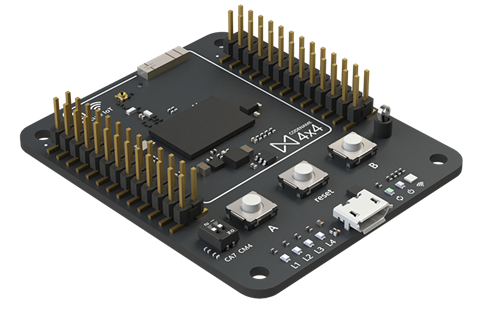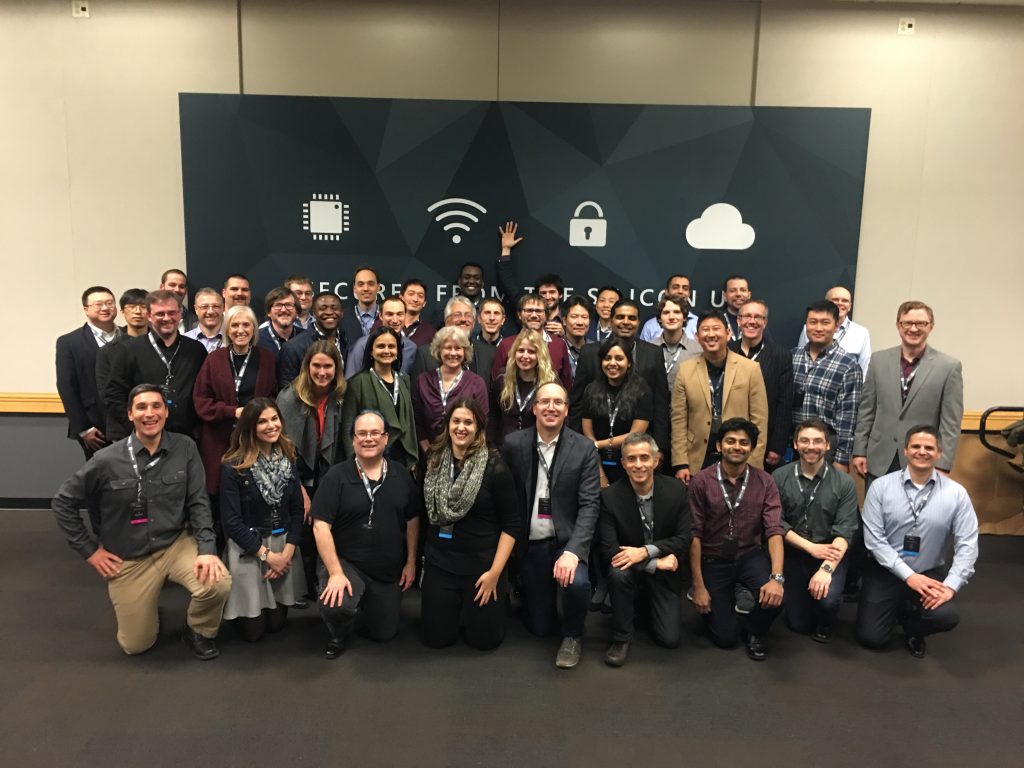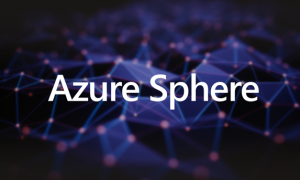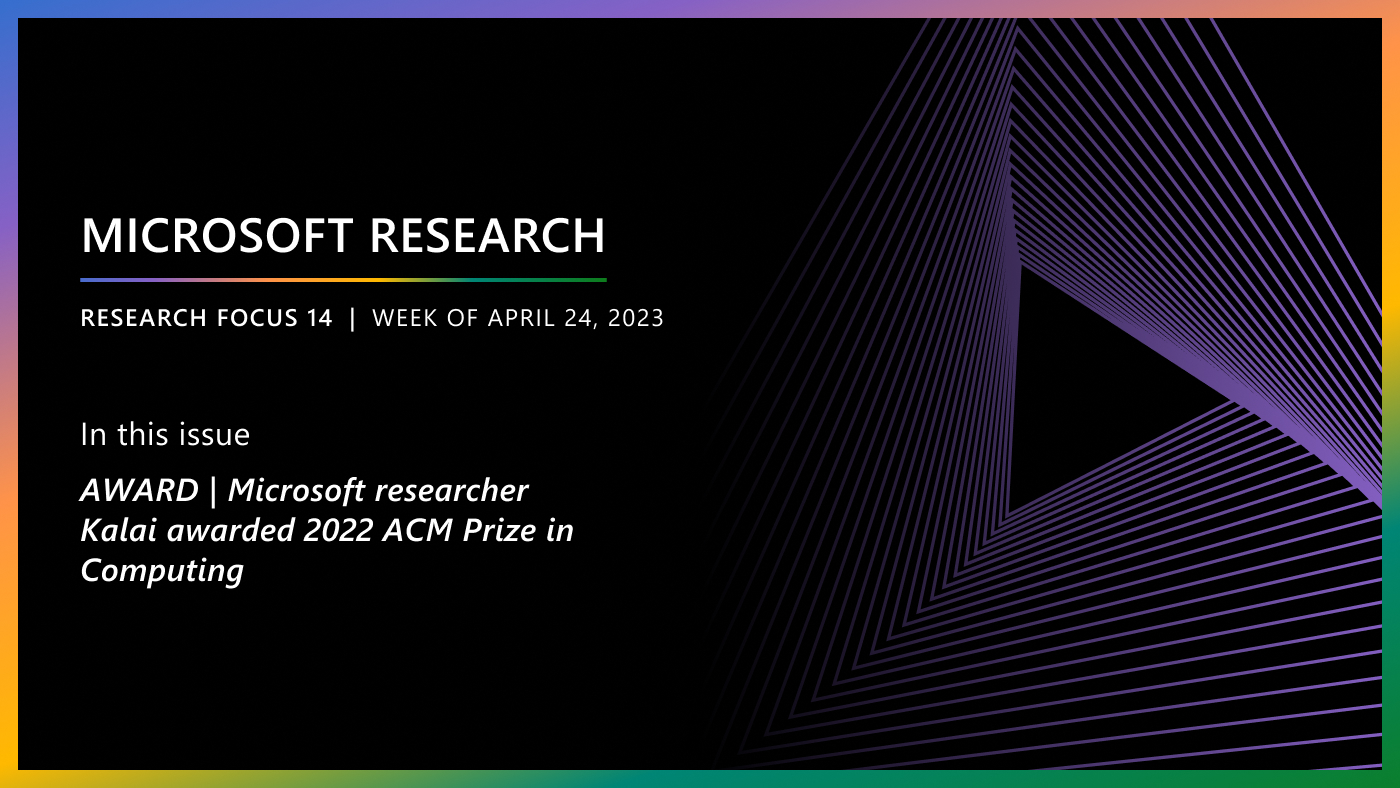At RSA Conference 2018, Microsoft announced Azure Sphere, previewing a unique new solution to help connect and secure the most populous category of computing today: the tens of billions of devices powered by microcontrollers (MCUs). Azure Sphere represents an opportunity for Microsoft and our partners to serve a new era of computing with securely connected devices at tremendous scale. Just as Microsoft brought affordable PCs to every desk, with Azure Sphere we aim to enable a low cost, securely connected experience on every device.
Azure Sphere was conceived in 2015 when a small team within AI+Research NExT began exploring the future of connected devices and innovating solutions for securing the vast number of future Internet-connected MCU-powered devices. This project team operated in an impact-focused white space to develop their ideas without being tethered to any specific technology or existing product; they were free to innovate. As a result, Azure Sphere became a true One Microsoft pursuit – a research-powered, cross-company effort combining the depth and breadth of our experience across silicon, software and cloud technologies. Azure Sphere makes achieving security for MCU-powered connected devices an easy, affordable, no-compromise decision for device-makers everywhere.
It is especially inspiring to me that Azure Sphere represents yet another product made possible by Microsoft’s deep investments in research, combining truly out-of-the-box thinking from brilliant researchers and engineers with product excellence and the growth mindset permeating today’s culture at Microsoft. As a product builder who has had an opportunity to envision and engineer innovation in several settings – independent startups, on small corporate teams, as well as within large engineering groups – I’ve enjoyed a privileged view into a special world at Microsoft, one fueled by imagination, research experimentations and a learning mindset. I’ve come to appreciate the unlimited possibilities unlocked when you develop on top of the depth of understanding that comes from decades of research, learn from years of experience in implementing these techniques into Microsoft’s biggest products and then bring these things together as a company to deliver a completely new solution with the potential to transform an entire category. These are advantages best found in a place like Microsoft, and our organization (NExT) has been exploring the power of these well-connected research + engineering hybrid teams to accelerate advances in a variety of areas, ranging from Silicon Futures, Artificial Intelligence to reinventing Healthcare and more.
Project Sopris: Hypothesize – Learn – Experiment – Refine
Not too long ago, Azure Sphere was just a spark in Galen Hunt’s mind. With several decades of experience as a systems researcher making significant contributions to our operating systems and to our computing architecture (plus tours of duty building production systems), Galen was struck by the extent of security vulnerability within the rapidly growing ecosystem of MCU-powered, network-connected devices. Not only were the newsworthy examples of exploitations on these vulnerable devices growing each day, the devastating effects of mass hacking and control of “zombie devices” was being felt far and wide on the Internet. Simultaneously, the increasing capabilities of AI, the promise of breakthroughs at the edge and the breathtaking ways in which connected edge devices are poised to disrupt practically every industry created urgency in finding a solution. This was the origin of the project, internally called “Codename 4×4”, referring to the technical requirements that the chip will have at least 4 MB of RAM and 4 MB of Flash on the processor that sits at the heart of Azure Sphere.

The Sopris development board
Last March, we shared our perspective on the immediate importance of securing low-cost edge devices, and our approach on how to do it effectively. Project Sopris – our research effort towards this goal – was published as a whitepaper outlining the Seven Properties of Highly Secure Devices for a no-compromise approach to security. The project team engaged deeply with the broader academic and security research community to share what we had learned, to test and refine our hypotheses and foster further learning. Working with a silicon partner, the team built a prototype chip and a developer board that incorporated what we had learned. These Sopris developer kits were then shipped to the security researcher community to extend information sharing, learn from field testing and to advance the conversation about the importance and immediacy of securing devices powered by MCUs.
Bringing the best together – in technology and in people
Today, Azure Sphere is being introduced to the world by a dream team built from the very best that Microsoft and our partners have to offer – from research to product to great ecosystem partners, together with our first set of forward-thinking customers. Azure Sphere pulls together some of the most innovative research work in the areas of secure silicon, OS architecture and cloud capabilities, with top business, engineering and manufacturing collaborators. We’ve come a long way, from Galen’s first imaginings to enabling future product innovation by those building new devices incorporating Microsoft Azure Sphere.
It has been a privilege to be part of building something novel and also something we all have come to see as being essential for the future of this category of computing. Research is not only about the quest for truth and beauty but also about getting ahead of the curve in effecting positive change and shaping the future to be safer and better for people everywhere. Project 4×4 and Azure Sphere represent how Microsoft leverages world-class research and engineering to invent, incubate, solve, build and ship new technologies and business opportunities across the globe. I like to think we serve the future and the world by delivering what’s NExT.

Secure from the Silicon Up – Codename 4×4 Team, December 2017






